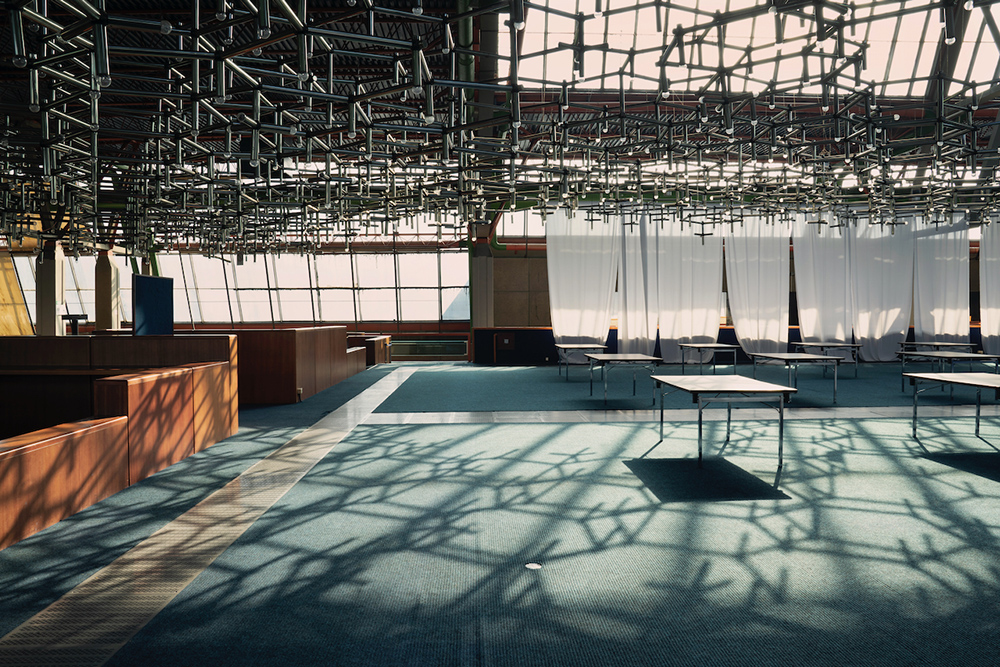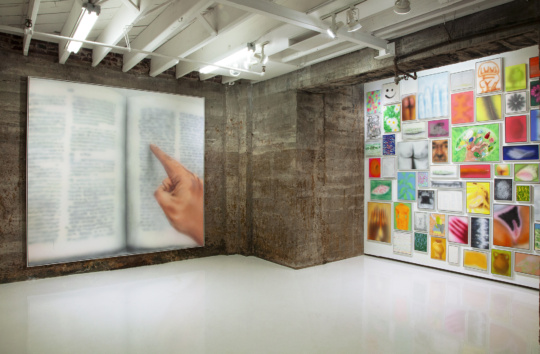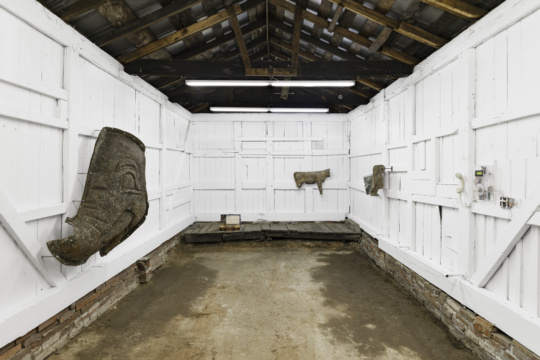
What is immediately noticeable about most of the photographs in Vesna Pavlović’s exhibition “Traversing Geographies, Complicating Memories” is the diminished presence of people in their frames. Human bodies, history, and memory feel central to the works in spite of this but are pantomimed through man-made interiors and objects rather than represented directly. These man-made interiors spaces’ and objects’ ghostly absence of people creates a void for the viewer to fill with speculation and mystery. Pavlović demonstrates throughout her this body of work that memory does not exist as an embodied idea, but rather as a place and its history.
Because the images and videos depict constructed spaces, intentional groupings and separations of artworks in the installation seem to physically imply connection or division and create an architecture within the gallery space. In this framework, the artworks function as choreographed dancers using spatial interaction to create theatrical drama between the artworks. For example, Figure 1. Inside the Federal Executive Council Building, Belgrade, Serbia (2019) stands out because of its isolation from other artworks. Photographs from Serbia and Cuba are presented in the same room, establishing commonality between sites, but closer inspection of their imagery, such as the tropical nature scene in Jardines de Hershey, Jibacoa, Cuba I (2019), differentiates them. As both countries are sites of failed socialist regimes, this mandate for closer inspection of the artworks expands to include a mandate for closer inspection of the countries themselves and what other artifacts from their histories might exist to relate or separate them.

The use of audio in Presente y Futuro (2019), Return (2019) and MixTape (2021) adds another, immaterial, site for contemplation. Donning the headphones attached to these works transports the viewer into a new space acoustically separate from the gallery in which recollections of these past failed regimes are told. Mixtape is an arrangement of boomboxes atop stacks of cinderblocks of varying heights and facing differing directions. The orchestration of this artwork inthe center of the room creates an “in the round” experience commonly associated with free-standing sculpture or black box theatre. Implicating the viewer’s body within the exhibition space assigns complicity with these memories. Experiencing them as an outsider is not possible when standing among them. The question is not“what do they remember about this history?” but “what do I remember?”
These works, unified by their spatial awareness, are ultimately condemned by their temporality. Photography, sound, and video, all time-based media, herald the death of the memories they preserve. Seeing this exhibition effectively revives these sites of memory but, much like scooping water with bare hands, it feels like a body that is slowly slipping away.
Traversing Geographies, Complicating Memories is on view at whitespace thru March 6.




